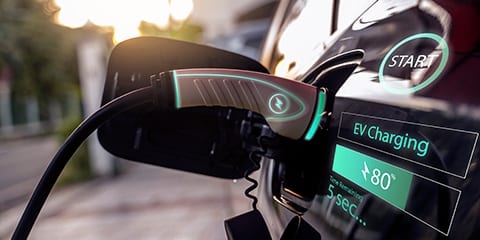Regenerative braking is a useful feature in electric vehicles (EVs), allowing the recovery of kinetic energy lost during braking. As drivers apply the brakes or ease off the throttle, the electric motor shifts from propelling the wheels to generator mode. In this mode, a portion of the kinetic energy is converted into electricity, which is then stored in the vehicle’s battery, contributing to a longer electric range.
For hybrid car drivers, regenerative braking results in less fuel consumption and reduced CO2 emissions. In the case of electric vehicles, regenerative braking enhances the distance that can be traveled between charges. It’s crucial to note that while regenerative braking is significant, it doesn’t replace traditional braking systems. In emergencies, standard disc brakes take over to ensure a complete stop.
Regenerative braking might initially require some adjustment for drivers, but it becomes a natural and enjoyable aspect of driving. The excitement is amplified by the knowledge that you are extending the car’s electric range. Proper use of regenerative braking is a key aspect of eco-driving, enhancing efficiency and allowing for extended travel. For instance, when traveling downhill and easing off the accelerator pedal, regenerative braking helps offset the energy needed to climb the next hill.
Many electric cars offer the flexibility to adjust regenerative braking settings to personal preferences. The Jaguar I-Pace, for example, provides two settings: low and high. In the low setting, deceleration is gradual, resembling the slowing down of a traditional car. In the high setting, deceleration is more rapid, potentially boosting range significantly. This concept, sometimes referred to as ‘one-pedal driving,’ allows drivers to navigate without frequent use of the brake pedal.
One-pedal driving is exemplified by features like the ‘e-Pedal’ mode of the Type 2 Nissan Leaf, where the driver can start, accelerate, decelerate, and stop using only the accelerator pedal. This mode enhances precision in throttle control, and with practice, drivers may find themselves using the brake pedal less frequently.
Looking ahead, the Porsche Taycan introduces the next generation of regenerative braking technology. Its Porsche Recuperation Management (PRM) system utilises a front-facing camera to monitor the road. When the accelerator pedal is released, the car coasts for an extended period if the road is clear, engaging regenerative braking when there’s a vehicle ahead. Porsche claims that up to 90% of braking can be achieved through regeneration alone, contributing to a more relaxed driving experience and potentially accounting for up to one-third of the electric range.



